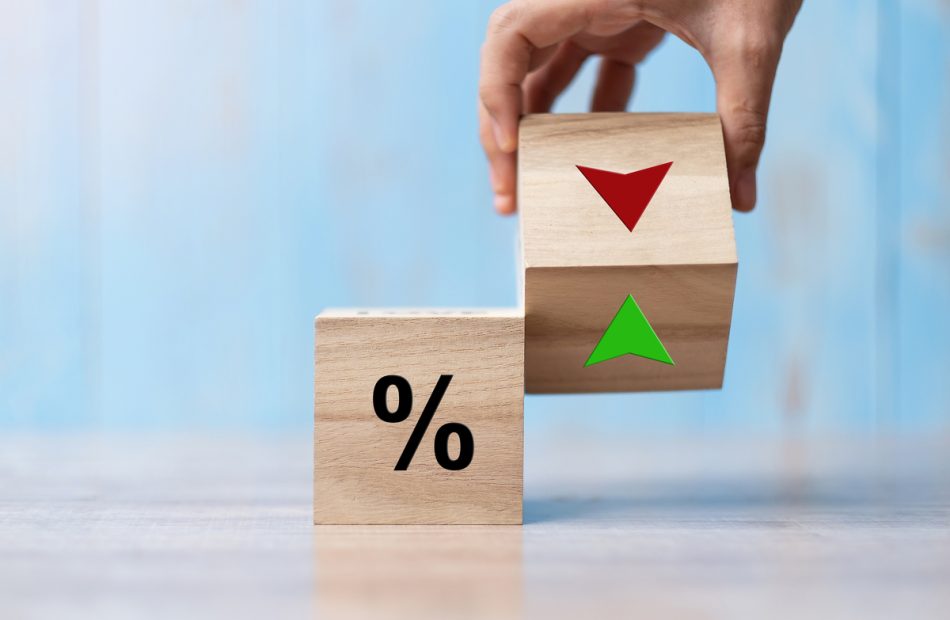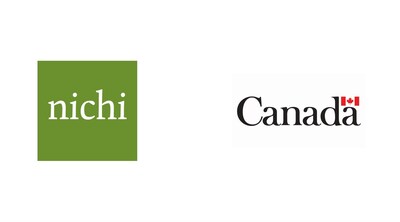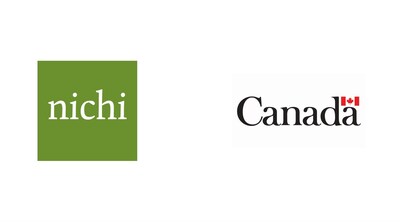Ipsos: Slowdown in activity in a more difficult business climate
Slowdown in activity in a more difficult business climate
Paris, October 24, 2024 – Ipsos, one of the world’s leading market research companies, achieved a revenue of 591 million euros in the third quarter, with a growth of 0.5%, including -0.1% organic growth, 2.8% from acquisitions, and -2.2% from currency effects. Over the first nine months of the year, revenue amounted to 1,730 million euros, up by 3.3%, including 2.4% organic growth. Performance has been mixed across different markets and hampered by an uncertain macroeconomic and geopolitical context.
Ben Page, CEO of Ipsos, stated: “Despite the slowdown in growth, we remain confident in the robustness of our operational model and continue to invest in future technologies and Artificial Intelligence. The improvement in gross margin and effective management of our operating costs allow us to maintain, for the fourth consecutive year, our operating margin target of around 13%.”
PERFORMANCE BY QUARTER
| 2024 vs. 2023 | |||
| In millions of euros |
2024 Revenue |
Total growth |
Organic Growth |
| 1st quarter | 557.5 | 4.8 % | 4.5 % |
| 2nd quarter | 581.0 | 4.7 % | 3.1 % |
| 3rd quarter | 591.0 | 0.5 % | -0.1 % |
| Revenue | 1 729.6 | 3.3 % | 2.4 % |
PERFORMANCE BY REGION
| In millions of euros |
2024 9 months revenue |
Contribution | Q3 Organic growth |
Organic growth over 9 months |
| EMEA | 793.1 | 46 % | 4.9 % | 6.7 % |
| Americas | 638.6 | 37 % | -5.9 % | -2.5 % |
| Asia-Pacific | 297.8 | 17 % | 1.4 % | 3.1 % |
| Revenue | 1 729.6 | 100 % | -0.1 % | 2.4 % |
Activity in the EMEA region continues to show strong performance with 4.9% organic growth in the third quarter, and 6.7% over the first nine months of the year. The Middle East recorded double-digit organic growth. In Continental Europe, some countries like Germany and Italy show very good results. Conversely, a climate of uncertainty has persisted since the summer in France, slowing client decisions and spending.
Latin America has recorded solid growth since the beginning of the year, but the Americas region is penalized by an unfavorable situation in the United States. Ipsos’ situation is not isolated, and other major players in the market research sector face difficulties in this area. Furthermore, the performance of our service lines is uneven in the United States: while activities with consumer goods players show good results, others are in sharp decline, such as Public Affairs and Health. The situation should improve in 2025 when the measures taken by the new management team bear fruit and political uncertainties dissipate. Excluding the United States, the Group’s organic growth stands at 5.6% since the beginning of the year and 4.0% in the third quarter alone.
Finally, the Asia-Pacific region shows organic growth of 3.1% over the first nine months of the year, including 1.4% in the third quarter. While the economic context in China remains sluggish, the rest of the region is also affected by the deterioration of the global context among major international clients, who slowed spending.
PERFORMANCE BY AUDIENCE
| In millions of euros |
2024 9 months revenue |
Contribution | Q3 Organic growth | Organic growth over 9 months |
| Consumers 1 | 846.8 | 49 % | 2.1 % | 6.0 % |
| Customers and employees 2 | 358.4 | 21 % | 2.4 % | 1.1 % |
| Citizens 3 | 273.6 | 16 % | -6.4 % | -1.6 % |
| Doctors and patients4 | 250.7 | 14 % | -4.2 % | -3.1 % |
| Revenue | 1 729.6 | 100 % | -0.1 % | 2.4 % |
Breakdown of Service Lines by audience segment:
1- Brand Health Tracking, Creative Excellence, Innovation, Ipsos UU, Ipsos MMA, Market Strategy & Understanding, Observer (excl. public sector), Ipsos Synthesio, Strategy3
2- Automotive & Mobility Development, Audience Measurement, Customer Experience, Channel Performance (Mystery Shopping and Shopper), Media development, ERM, Capabilities
3- Public Affairs, Corporate Reputation
4- Pharma (quantitative et qualitative)
Our consumer research activities are driving the Group’s growth. This reflects the strong performance of our service lines related to innovation, customer experience, and advertising creation.
The citizens, doctors and patients work is particularly hampered by the difficult situation in the United States.
Finally, our new services (platforms, ESG offerings, data analytics and advisory), which account for 22% of the Group’s revenue, achieved 10% organic growth over the first nine months of the year. This growth is driven by Ipsos.Digital, our DIY solution, which shows a 32% increase over the same period.
PERSPECTIVES
As we announced on October 15, we now anticipate organic growth of around 1% for this year.
The rise in gross margin, combined with good financial discipline, allows us to maintain our annual operating margin target of around 13%.
At the same time, the Group continues to invest in the development of platforms and solutions using generative AI, as well as in digital data collection processes, which are at the core of our business. The development of Ipsos Facto, our secured Generative AI platform, continues. As of today, 70% of our employees are using it regularly. Generative AI is letting create new solutions for our clients’ evolving needs. This includes innovative work with synthetic data and advanced solutions such as persona bots and digital twins that are being piloted for product testing and other applications.
The acceleration of our acquisitions has strengthened our leadership position in several markets, notably in Public Affairs. At the end of August, Ipsos launched a voluntary public takeover bid for infas, a leader in public sector research in Germany, to become one of the main players in the sector in that country. To date, the operation has received approval from 89.6% of shareholders.
Additionally, the Lac1 fund, managed by Bpifrance, became a major shareholder of Ipsos in September. This partnership reflects confidence in the Group’s long-term growth potential and supports its development ambitions.
Our strategic review, Horizons 2030, is now well underway and we will announce our new plans before summer 2025.
ABOUT IPSOS
Ipsos is one of the largest market research and polling companies globally, operating
in 90 markets and employing nearly 20,000 people.
Our passionately curious research professionals, analysts and scientists have built unique multi-specialist capabilities that provide true understanding and powerful insights into the actions, opinions and motivations of citizens, consumers, patients, customers or employees. Our 75 business solutions are based on primary data from our surveys, social media monitoring, and qualitative or observational techniques.
“Game Changers” – our tagline – summarizes our ambition to help our 5,000 clients navigate with confidence our rapidly changing world.
Founded in France in 1975, Ipsos has been listed on the Euronext Paris since July 1, 1999. The company is part of the SBF 120, Mid-60 indices, STOXX Europe 600 and is eligible for the Deferred Settlement Service (SRD).
ISIN code FR0000073298, Reuters ISOS.PA, Bloomberg IPS:FP
www.ipsos.com
35 rue du Val de Marne
75 628 Paris, Cedex 13 France
Tel. +33 1 41 98 90 00

© 2024 Benzinga.com. Benzinga does not provide investment advice. All rights reserved.
AGNC Investment Sees a Big Change Ahead. Here's What That Could Mean for its Nearly 14%-Yielding Dividend.
AGNC Investment (NASDAQ: AGNC) is a leader in investing in the Agency residential mortgage-backed securities (MBS) market (i.e., MBS protected from credit losses by government agencies like Fannie Mae). The company has a massive MBS portfolio (over $71.8 billion). It also has extensive experience navigating the MBS market and can tell when changes are in the air.
It sees the Federal Reserve’s recent rate cut as a catalyst for a big change in the MBS market. Here’s what it sees ahead and how that might affect the mortgage REIT’s monster dividend that currently yields nearly 14%.
AGNC Investment’s CEO, Peter Federico, commented on the changes occurring in the MBS market in the company’s third-quarter earnings press release, noting:
The long-awaited monetary policy pivot by the Fed occurred at its September meeting, with an initial 50-basis-point rate cut. Consistent with historical experience, the Fed is expected to return the federal funds rate to a neutral level over the next 12 to 24 months, which would typically be accompanied by a steepening of the yield curve and growing demand for high-quality fixed-income instruments such as Agency MBS. Although the path of financial markets is never perfectly linear and periods of volatility are inevitable, the outlook for Agency MBS today is decidedly better than it was in 2022 and 2023 as a result of the positive direction of the broader economy, the accommodative Fed monetary policy stance, and the stability of Agency MBS spreads at these historically favorable levels.
After keeping rates high for the past several years to combat inflation, the Federal Reserve instituted a policy change by cutting interest rates last month. It will likely continue to reduce rates for the next one to two years.
In the past, a Fed policy change to lower rates has historically had two notable benefits for a mortgage REIT, such as AGNC Investment. First, it reduces the REIT’s borrowing costs. Mortgage REITs borrow money on the short-term market (which is what a Federal Reserve rate cut influences most) to invest in longer-duration MBS.
On top of that, lower rates tend to drive more stability in the MBS market. Because of that, the REIT should be able to earn a very favorable spread between its borrowing costs and MBS investments. That higher spread or profit margin will enable it to make more money to cover its lucrative dividend.
The improvement in market conditions was already apparent in the third quarter. Federico noted that AGNC Investment generated a “very strong economic return of 9.3%” in the quarter, driven by a significant $0.42-per-share increase in its tangible book value and its $0.36 per share in dividend payments during the quarter. The REIT generated $0.63 per share of comprehensive net income in the quarter, easily covering its monster dividend.
Tesla Delivers Blowout Quarter, Lays Out Bold Ambitions for 2025
(Bloomberg) — Tesla Inc. shares climbed in early trading after the carmaker reported surprisingly strong earnings and forecast as much as 30% growth in vehicle sales next year.
Most Read from Bloomberg
Third-quarter results were buoyed by Tesla turning a corner with the Cybertruck, which contributed to profit for the first time. Lower material costs, an expanding energy business and sales of regulatory credits to automakers that need help complying with emissions standards also contributed to Tesla’s biggest quarterly profit in more than a year.
Chief Executive Officer Elon Musk offered an upbeat outlook for next year, driven by the rollout of more affordable models that Tesla has yet to identify. “Something like 20% to 30% growth next year is my best guess,” he said on a call with analysts.
Tesla shares jumped 11% as of 5 a.m. Thursday in New York, before the start of regular trading. The stock had fallen 14% this year through the close Wednesday, having slumped in the weeks since Musk unveiled self-driving taxi and van prototypes.
Musk is betting Tesla’s future on autonomy, having scrapped plans for a new vehicle that was going to be cheaper than the Model 3 sedan. By reporting an uptick in profitability and optimism about next year, the CEO assuaged concerns that Tesla’s core business will continue slipping while he prioritizes a years-long pursuit of self-driving technology.
“Investors who wanted something today got better-than-expected profit and guidance for growth in deliveries,” said Gene Munster, managing partner of growth-investment firm Deepwater Asset Management. “The long-term investors got the golden carrot.”
Musk spent a brief portion of the earnings call floating what he might do in a second Trump administration.
After calling for a federal approval process for autonomous vehicles, the Tesla CEO said he would “try to make that happen” if appointed to a government-efficiency role that he and Republican nominee Donald Trump first discussed in August. The billionaire has backed the candidate by pouring $75 million into a super political action committee he created earlier this year.
Tesla projected “slight growth” in vehicle deliveries this year, which will require a record showing in the fourth quarter after sales slumped in the first half.
North Korean Troops Land In Russia, Sparking Fears Of Escalation In Ukraine Conflict
In a recent development, approximately 3,000 North Korean soldiers have been reported to arrive in Russia this month. This sudden movement has stirred concerns about a potential escalation in the ongoing Ukraine conflict, as per the White House.
What Happened: The North Korean soldiers were relocated from North Korea to eastern Russia in the early to mid-October, reported CNN on Wednesday. The exact role these troops are to play is still unclear, but there is a “highly concerning probability” they may join the fight against Ukraine, stated National Security Council spokesman John Kirby.
Lloyd Austin, the Secretary of Defense, confirmed the deployment of North Korean troops to Russia, while also noting that their exact activities are yet to be determined. The US does not believe these troops have reached Ukraine, but their movement has caused significant concern.
“If they’re a co-belligerent, their intention is to participate in this war on Russia’s behalf, that is a very, very serious issue,” Austin stated. He also mentioned that this could impact not only Europe but also the Indo Pacific region.
The US has briefed the Ukrainian government and is in close consultation with allies and partners. The training and potential preparation of North Korean soldiers to fight in Ukraine is seen as a sign of desperation on Russia’s part.
The deepening military partnership between Moscow and Pyongyang, especially their anti-US stance, has alarmed officials in Kyiv and Washington.
Why It Matters: ABC News reported on Thursday that the US has evidence of North Korean troops in Russia, as confirmed by Defense Secretary Lloyd Austin. The exact activities of these troops remain uncertain, but their presence in Russia is seen as a “very” serious issue.
This development indicates a potential shift in the dynamics of the Ukraine conflict, with the involvement of North Korean troops possibly escalating the situation.
Did You Know?
Engineered by
Benzinga Neuro, Edited by
Jae Hur
The GPT-4-based Benzinga Neuro content generation system exploits the
extensive Benzinga Ecosystem, including native data, APIs, and more to
create comprehensive and timely stories for you.
Learn more.
Market News and Data brought to you by Benzinga APIs
© 2024 Benzinga.com. Benzinga does not provide investment advice. All rights reserved.
Trump Jr. Clashes With Justin Wolfers Over Surging Treasury Yields: 'Our Children Will Never Recover' — El Erian And Other Experts Weigh In
The 10-year Treasury yield has reached its highest point since July, a development that has drawn attention from global markets.
What Happened: The 10-year Treasury yield closed at 4.24% on Wednesday, up from 4.204% on Tuesday and 4.074% at the end of the previous week, as reported by Benzinga. This is the highest settlement yield since Jul. 25, according to Market Data.
The yield has been consistently rising for over a month, with a particularly sharp increase on Monday, and has continued to climb incrementally since then.
On Wednesday, The S&P 500 experienced a slump of 1.24% from its opening value of 5,834.50 to its lowest point of 5,762.41. The index later recovered and closed at 5,797.42.
Economist Mohamed El-Erian pointed out the significant difference in the extent of the yield increase between the U.S. and other countries. He stated that the U.S. 10-year yield has risen by almost 50 basis points this month, while Germany’s has only increased by around 20 bps, widening the differential to 194 bps.
“While the October increase in US government bond yields have pulled yields up in other countries, the extent of the moves is quite different,” El-Erian wrote on X.
El-Erian also noted that this difference helps explain recent currency movements.
Richard Clarida, a former member of the Federal Reserve Board, commented on the trend ahead of the Federal Reserve’s November meeting in an interview with CNBC’s Closing Bell, emphasizing that the increase is primarily driven by solid growth indicators rather than inflation concerns.
He noted, “the economy is stronger than they probably thought it would be,” suggesting that expectations around future rate cuts may need adjustment as the neutral rate appears higher than previously anticipated.
In a heated exchange on social media, former President Donald Trump‘s son Donald Trump Jr. accused Democrats of trying to manipulate economic numbers by spending “half a trillion dollars two weeks before an election,” asserting that this financial maneuvering will leave future generations burdened by an insurmountable debt.
He claimed, “You can’t make this stuff up anymore. Our children will never be able to get out from under the debt created by these power-hungry imbeciles.” His remarks came in the wake of Treasury yields surging.
Responding to the post, economist Justin Wolfers emphasized that such fluctuations in Treasury debt are typical and should not be viewed as signs of wrongdoing. “To be clear: I don’t think there’s anything nefarious going on,” he stated, noting that “blips like this happen all the time,” particularly given the economic disruptions caused by the pandemic.
Wolfers highlighted that while rising yields can indicate changing economic conditions, they are influenced by a variety of factors and do not necessarily reflect manipulation or ill intent by policymakers.
Read Next: Why Nasdaq, S&P 500 Futures Are Trading Lower Wednesday
Image Via Shutterstock
Disclaimer: This content was partially produced with the help of AI tools and was reviewed and published by Benzinga editors.
Market News and Data brought to you by Benzinga APIs
© 2024 Benzinga.com. Benzinga does not provide investment advice. All rights reserved.
NICHI announces Manitoba recipients of funding to advance critical Indigenous housing projects in urban, rural and northern areas and address urgent and unmet needs
WINNIPEG, TREATY 1 TERRITORY, MB, Oct. 23, 2024 /CNW/ – Today, National Indigenous Collaborative Housing Incorporated (NICHI) Chief Executive Officer John Gordon and Minister of Indigenous Services and Minister responsible for FedNor, Patty Hajdu, announced the recipients of NICHI’s expression of need process to address the critical need for safe and affordable urban, rural and northern Indigenous housing projects in Manitoba.
Today’s announcement includes nearly $21 million in funding for 7 projects in Manitoba led by:
- Manitoba Keewatinowi Okimakanak
- 2Spirit Manitoba
- Winnipeg Indigenous Friendship Centre
- Ndinawemaaganag Endawaad Inc.
- First Nation Healing Centre Inc.
- Flin Flon Aboriginal Friendship Centre
- Manitoba Inuit Association
Through the national process, $277.8 million out of a total funding amount of $281.5 million is being distributed to 75 projects across the country aimed at building more than 3800 units. This funding was provided to Indigenous Services Canada through Budget 2022 and was distributed by NICHI, applying its “For Indigenous, By Indigenous” approach. NICHI brings together Indigenous-led housing, homelessness, and housing-related service delivery organizations to provide lasting solutions that address diverse housing inadequacies, including homelessness for Indigenous Peoples living in urban, rural and northern areas.
Over 171,000 Indigenous Peoples in urban, rural and northern areas off reserve are in core housing need according to the 2021 Census. Indigenous Peoples continue to experience core housing needs at a significantly higher rate than non-Indigenous people – with the gap between them being exacerbated by the housing and homelessness crisis and by inadequacies in distinctions-based funding.
Through a For Indigenous, By Indigenous approach to Indigenous housing that recognizes Indigenous organizations are best placed to understand the needs of their communities, Indigenous Services Canada is striving to close this gap by 2030.
Access to safe and affordable housing is critical to improving health and social outcomes and to ensure a better future for Indigenous communities. This funding initiative is part of the Government of Canada’s commitment to address the social determinants of health and advance self-determination in alignment with the United Nations Declaration on the Rights of Indigenous Peoples Articles 21 and 23.
Quotes
“Indigenous housing providers deserve Indigenous advocacy at the national level. By securing this investment and developing a For Indigenous, By Indigenous funding process, NICHI is putting Indigenous people back in charge of housing policy for our people and communities. The overwhelming expression of need we received in our application process—totalling $2 billion across 447 applications—demonstrates that the work is far from over—but today, we’re excited to announce funding that will make a positive impact in the lives of Indigenous peoples in Manitoba.”
John Gordon
Chief Executive Officer, National Indigenous Collaborative Housing Incorporated
“In true partnership with Indigenous Peoples, we are getting more homes built, faster. Communities know best what they need, which is why these projects follow a By Indigenous, For Indigenous approach. We will always be there for communities as they take the lead to build homes; it’s a matter of fairness.”
The Honourable Patty Hajdu
Minister of Indigenous Services
“NICHI’s remarkable achievement in swiftly delivering $277.8 million underscores its unwavering commitment to advancing Indigenous housing nationwide. As a new organization, NICHI’s expedient action demonstrates unparalleled dedication and catalytic impact on transforming community housing landscapes. We commend NICHI for its pivotal role in driving forward this transformative initiative.”
Lisa Ker
Acting Executive Director for the Community Housing Transformation Centre
“With thousands of years of collective experience, urban, rural, and northern Indigenous housing providers have the capacity, know-how, and shovel-ready projects to address the challenge. NICHI has shown that it can deliver funding programs swiftly, fairly, and responsibly.”
Margaret Pfoh
President, Canadian Housing and Renewal Association
Quick facts
- On June 8, 2023, the Government of Canada announced that the National Indigenous Collaborative Housing Inc. (NICHI) would deliver $281.5 million in immediate funding over two years to address the urgent, unmet needs of Indigenous Peoples living in urban, rural and northern areas.
- NICHI held its expression of need process from late November 2023 to January 12, 2024, and funding was allocated to 75 non-profit, Indigenous-led housing organizations by an objective, unbiased Project Selection Advisory Council, which prioritized urgent and unmet housing needs in Indigenous communities across the country. Currently, $3.7 million of the total funding amount remains to be allocated.
- The National Indigenous Collaborative Housing Inc. (NICHI) is an Indigenous-led national housing organization working to ensure that all Indigenous people across Canada have access to supports and services that provide safe, affordable, secure and dignified housing.
- Support for projects will include funding for acquisitions of new properties and buildings, construction of new facilities, repairs and renovations, housing-related training, growing organizational capacity and administration costs.
Associated links
National Indigenous Collaborative Housing Incorporated (NICHI)
Housing for Indigenous Peoples
Stay connected
Join the conversation about Indigenous Peoples in Canada:
X: @GCIndigenous
Facebook: @GCIndigenous
Instagram: @gcindigenous
Facebook: @GCIndigenousHealth
You can subscribe to receive our news releases and speeches via RSS feeds. For more information or to subscribe, visit www.isc.gc.ca/RSS.
SOURCE Indigenous Services Canada

![]() View original content to download multimedia: http://www.newswire.ca/en/releases/archive/October2024/23/c9363.html
View original content to download multimedia: http://www.newswire.ca/en/releases/archive/October2024/23/c9363.html
© 2024 Benzinga.com. Benzinga does not provide investment advice. All rights reserved.
IBM misses third-quarter revenue estimates as consulting drags; shares fall
-International Business Machines (IBM) missed analysts’ estimates for third-quarter revenue on Wednesday, hurt by weakness in its consulting segment as businesses cut back on discretionary expenses, coupled with declines in the infrastructure business.
IBM’s shares fell about 4% after rising more than 40% this year, as investors bet on the company’s potential to benefit from generative AI through its software and consulting services.
An uncertain macroeconomic backdrop has prompted businesses to prioritize expenses on long-term consulting projects centered around AI, impacting IBM’s sales from shorter-term deals.
“A pause in discretionary spending is impacting our consulting business,” CEO Arvind Krishna said during a post-earnings call.
Revenue grew about 1% to $14.97 billion, missing estimates of $15.07 billion, according to data compiled by LSEG. Revenue from consulting was relatively flat in the third quarter.
The company’s AI Book of Business — a combination of bookings and actual sales across various products — grew to $3 billion, up $1 billion from the second quarter.
“Many clients are looking at how to free up cost and productivity to go invest in GenAI,” Chief Financial Officer James Kavanaugh told Reuters.
The book was driven by consulting, constituted of one-fifth software and four-fifths consulting in the third quarter. However, this growth is not yet reflected in the overall consulting segment.
“Client budgets are not expanding and AI consulting, rather than being additive, is cannibalizing other engagements,” said Michael Ashley Schulman, chief investment officer at Running Point Capital.
Conversely, IBM’s software segment recorded its biggest jump in quarterly revenue in three years, as enterprises expand cloud infrastructure to accommodate genAI tech.
Software growth has helped drive profit of $2.30 per share for the third quarter, beating analysts’ average estimate of $2.23 per share, according to data compiled by LSEG.
The company’s infrastructure segment, which houses IBM’s mainframe, saw revenue decline 7% as the business is at the end of a three-year product cycle, when sales cyclically slump.
(Reporting by Arsheeya Bajwa in Bengaluru; Editing by Alan Barona)
I'm Paying 1% on $2 Million: Is My Financial Advisor Charging Too Much?
SmartAsset and Yahoo Finance LLC may earn commission or revenue through links in the content below.
Paying a 1% annual fee to a financial advisor for managing a $2 million investment portfolio is pretty typical, but that doesn’t necessarily mean it’s the right amount for every investor. Even small-sounding financial advisor fees can seriously erode long-term returns when compounded over years or decades. A 1% annual fee on a $2 million portfolio earning 7% could cost you more than $375,000 over 10 years. You may be able to get better performance by choosing a less costly advisor or otherwise finding a lower fee rate. The key is to identify specific services you are receiving in exchange for those fees and carefully evaluate whether your portfolio’s performance and advisor relationship justify the costs from a mathematical and personal perspective.
Do you have questions about retirement planning, tax planning or investing? Speak with a financial advisor today.
According to a 2021 study by Advisory HQ, the average financial advisor fee is 1.02% for $1 million in assets under management (AUM) as an annual fee. Advisors and firms all have their own fee schedules, though, so these can vary. This type of fee usually covers investment management, portfolio monitoring and performance reporting services, hence why they’re usually based on asset tiers. For things like financial planning and other services, hourly and fixed fees are more common, though percentage-based fees can still apply.
Advisors with more years of experience, advanced expertise or special certifications like certified financial planner (CFP) can sometimes charge higher fees. The exact fee percentage can also typically differ depending on the overall account size and specific mix of services provided.
For example, an advisor may offer a tiered fee schedule where the percentage rate decreases as asset amounts rise. In other words, on the first $1 million in a portfolio, the annual fee may be 1.2%, while assets above $2 million are charged at a rate of just 0.8%. This structure allows firms to serve clients across the wealth spectrum, while still being incentivized to help those clients continue accumulating assets.
Some advisors also customize service offerings and related fees to match a client’s needs. An advisor may charge a lower percentage fee, but exclude financial planning and instead focus narrowly on investment management. Others may set up a comprehensive service bundle that includes financial planning, tax preparation, estate planning review, insurance analysis and other, more specialized offerings. In those cases, the fee paid may be higher but aims to encompass full-scope financial guidance rather than just investment portfolio oversight.







